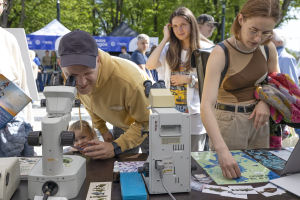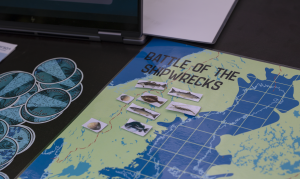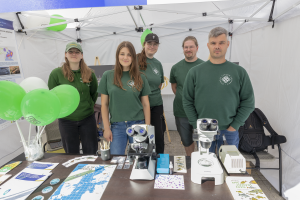Preventing massive marine waters chemical pollution from the leaking wrecks and munition/ weapon dumps in the South Baltic (BaltWreck)

BALTWRECK – Preventing massive marine waters chemical pollution from the leaking wrecks and munition/weapon dumps in the South Baltic
THE BALTWRECK OBJECTIVE is to contribute to reducing pollution of the Baltic Sea by hazardous fuel, munitions and other remains of shipwrecks by jointly developing, demonstrating and implementing wreck management methods. Results will include:
(1) efficient wrecks diagnostics methods,
(2) in-situ remediation technologies for hazardous fuels from wrecks as well as munition and explosives,
(3) testing of the developed solutions in at least 3 pilot locations,
(4) examining the toxicological risk for marine ecosystems caused by dumped munitions and hydrocarbon deposits.
(5) recommendations for policy makers, local marine and cities administration will be formulated.
THE PROJECT AIMS to reach a wide spectrum of target groups, including international, national and local policymakers, local citizens, researchers and other related stakeholders in the field of marine waters and its environmental protection.
THE BALTWRECK CONSORTIUM consists of 14 Partners, from 4 Baltic countries (Poland, Lithuania, Germany and Sweden):
- Coordinator – Institute of Fluid-Flow Machinery Polish Academy of Sciences (IMP PAN) (Poland)
- University of Gdansk (Poland)
- Association of Polish Communes Euroregion Baltic (Poland)
- Gdynia Maritime University (Poland)
- JT Ship Service Tomasz Jatkowski (Poland)
- Jagiellonian University (Poland)
- Nature Research Centre (Lithuania)
- Klaipeda University (Lithuania)
- Leibniz-Institut für Ostseeforschung Warnemünde (Germany)
- GEOMAR Helmholtz-Zentrum für Ozeanforschung Kiel (Germany)
- Umweltbundesamt – German Environment Agency (Germany)
- north.io GmbH (Germany)
- CLEANERGY LtD. (Germany)
- Chalmers University of Technology (Sweden)
ASSOCIATED PARTNERS:
- Environmental Protection Agency (Lithuania)
- Association of Sea Cities and Municipalities (Poland)
- Polish Register of Shipping Joint-Stock Company (Poland)
- Maritime Office Gdynia (Poland)
- Stegna Municipality, Tolkmicko Commune/RATUSZ TOLKMICKO (Poland)
- Pomorskie Voivodeship (Poland)
- Tourism Association Mecklenburg-Western Pomerania (Germany)
- State Agency for Environment, Nature Conservation and Geology Mecklenburg-Vorpommern (Germany)
- Finnish Environment Institute (Syke) – Suomen ympäristökeskus (Syke) (Finland)
- HELCOM – Baltic Marine Environment Protection Commission (Finland)
THE TOTAL BUDGET OF BALTWRECK amounts to 3 830 000 Eur, including funding of 3 060 000 Eur from European Regional Development Fund via the Interreg South Baltic Programme.
DURATION: 2024-07-01–2027-06-30
1. Kick-off Conference Activities
📍 Event:
BaltWreck Project Kick-off Conference
🔗 View on LinkedIn
🎥 Media:
Short Interviews from the Conference
🔗 Watch Video on Dropbox
2. Public Engagement & Outreach
📍 Event Participation:
1. “Save the Baltic Sea” Expedition – Final Event
On 6 December 2024, the final event of the “Save The Baltic Sea” hiking expedition took place at Litexpo, drawing public and media attention. Researchers from the Nature Research Centre’s Laboratory of Ecotoxicology presented the BaltWreck project, which started in July 2024 and is funded by the EU’s Interreg South Baltic Region programme (2024–2027). The project focuses on preventing chemical pollution from leaking shipwrecks and munitions in the Baltic Sea by developing and implementing innovative wreck management and remediation methods. During the event, visitors learned about the project’s goals, recent research, and its role in safeguarding the Baltic Sea marine environment.
🔗 View on Gamtostyrimai.lt
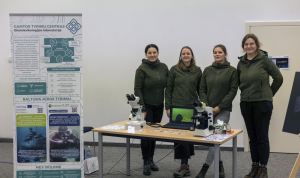
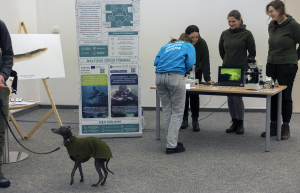
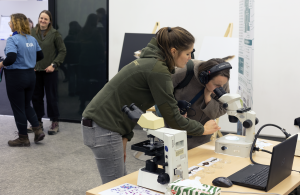
2. 📰 Featured Article:
BaltWreck in the Media
The geographical location of the Baltic Sea influences its condition, but this is by no means the main reason why there is talk about the necessity to save it.
The Baltic Sea is unique in that it is relatively small and shallow, semi-enclosed, with limited connection to the Atlantic Ocean, and has low salinity. It is theoretically estimated that its water renews approximately every 30 years, making it sensitive to pollution — contaminants entering through about 200 inflowing rivers remain here longer than in other seas. It is a relatively young sea and therefore less rich in life. However, its coastal areas teem with life — its basin is densely populated, urbanized, and surrounded by countries with well-developed industries. These geographical and biological factors are not very favorable for the Baltic Sea ecosystem, but the complex natural situation is further aggravated by human activities.
🔗 Read Article
3. “Savos Bangos: Sustainable Future Makers’ Laboratory” – festival
On June 21st, at Danė Square in Klaipėda, Lithuania, the festival “Savos Bangos: Sustainable Future Makers’ Laboratory” brought together everyone who cares about the future of our planet and the Baltic Sea. This event, initiated by the Lithuanian Sea Museum and Ignitis Renewables, encouraged reflection on sustainability, reducing consumption, and choosing green energy.
Our team from the State Scientific Research Institute Nature Research Centre was pleased to present the BaltWreck project. During the festival, visitors were introduced to the project’s activities and planned research directions, and discussed how these scientific studies will contribute to preserving the Baltic Sea and creating a sustainable future.
🔗 Read More
